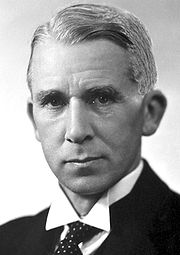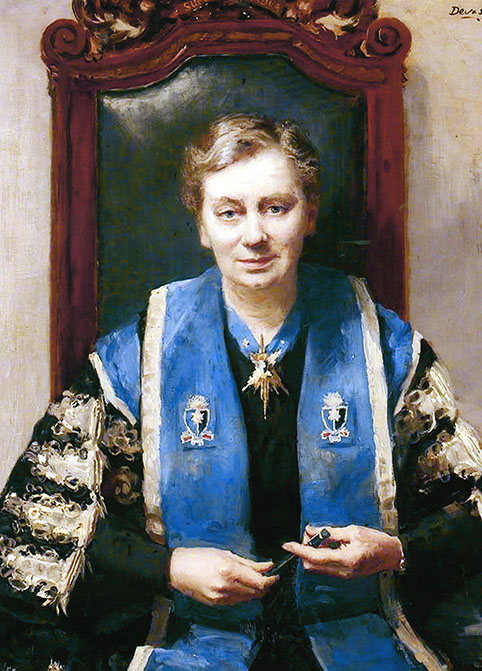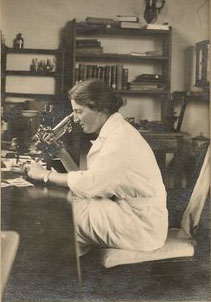
|
The Lickey Hills Local History Society |

|
The Lickey Hills Local History Society |
|
Home About the LHLHS Programme Time Line - coming soon Churches People Schools Military Activity War Memorials Publications Links Contact Us | PeopleScroll down for people who are connected to the local area in some way:
1883-1950  He was born at Chorley, Lancashire, and went to the local school until the age of fourteen. He joined his father to learn linoleum design and manufacture. He became interested in chemistry through the use of dyestuffs in his work and he sought private tuition. He was accepted to study Chemistry at Manchester University, graduating with 1st Class Honours in 1906, and a D.Sc. in 1911. He worked at the Imperial College, London, St. Andrews, and Durham University. He became Professor and Director of the Department of Chemistry in Birmingham University in 1925 and he stayed until he retired in 1948, becoming Dean of the Faculty of Science. He was knighted in 1947. He was best known for his groundbreaking work on ascorbic acid (vitamin C). He received the 1937 Nobel Prize in Chemistry "for his investigations on carbohydrates and vitamin C". He also developed a simple method of representing on paper the three-dimensional structure of sugars. The representation, using perspective, now known as a Haworth projection, is still widely used in biochemistry. He is commemorated at the University of Birmingham in the Haworth Building, home to most of the School of Chemistry. There is also a Haworth Chair of Chemistry. He was President of the Chemical Society, and Vice-President of the Royal Society. He lived with his family in Barnt Green for many years. He is buried in Lickey Churchyard Extension. In 1977 Royal Mail issued a stamp celebrating his achievement in synthesizing vitamin C and Nobel Prize. For more details of his work see the Nobel Prize website 1891-1982  Born Hilda Nora Shufflebotham in 1891, the daughter of a Master Grocer in Balsall Heath, Birmingham and became Dame Hilda Lloyd, the first and only woman to hold the position of President of the Royal College of Obstetricians and Gynaecology. She qualified as a doctor at Birmingham University and worked most of her career at Birmingham Maternity and Womens Hospitals. She rose through the ranks to become a qualified surgeon, lecturer and professor of Obstetrics and Gynaecology at Birmingham University. Hilda Lloyd had considerable concern for the plight of the poor urban women living in the slums of Birmingham who suffered the effects of sexually transmitted diseases, illegal abortions and complicated pregnancies; all of which were the cause of a high number of deaths of both mothers and babies. As a consultant obstetrician and surgeon during the 1930s, she pioneered an obstetric flying squad based at the Maternity Hospital. This unit offered emergency obstetric care, which included the use of the then newly invented gas and air machine, was able to administer blood transfusions and emergency resuscitation when necessary, all carried out in the patients home. The unit was staffed by a rota of obstetricians, midwives and medical students. They used a fully equipped ambulance always kept on standby. The unit responded to G.P.s and midwives aiming to reach the patient in 30 mins of receiving a call for help. During its existence the unit was credited with saving countless lives and Hilda Lloyd considered this to be one of the main accomplishments of her career. In recognition of her work Hilda Lloyd was created Dame of the British Empire in 1951. Her portrait hangs in the Royal College of Obstetrics and Gynaecology and blue plaques in her honour are situated at Birmingham Womens Hospital and Birmingham University. Hilda Lloyd married Professor Arthur Lloyd in 1930. He was a Forensic Surgeon and pathologist at Birmingham University and of equal professional status in his own field as his wife. The couple had no children. Their Birmingham residence was in Harborne near to the University and Maternity Hospital but they also had a country house in Mearse Lane, Lickey. It was here they came for relaxation from their heavy commitments in Birmingham. While in residence they would walk the hills and attend Holy Trinity Church at Lickey. They took an interest in local life and events that occurred in the countryside around them. Arthur Lloyd died in 1948 and in his memory Dame Hilda donated woodwork designed by John Scott, to the north isle of the church, some of which can still be seen today. Following her retirement in 1954 Dame Hilda moved to Broom near Kidderminster where she died in 1982 in her 90th year. 1832-1880  Alpine Climbers by Elijah Walton. Birmingham Art Gallery He was born in 1832 in Bromsgrove Street, Birmingham, the son of a Birmingham tailor. He was first taught painting techniques by his grandmother, the daughter of an artist. He trained at the Birmingham School of Design and later at the Royal Academy. An artistic child prodigy, Elijah was reputed to have first exhibited and sold work at the Royal Academy at the age of 15. In 1860 he married and went to Switzerland and Egypt on honeymoon. His bride tragically died and he decided to remain in the Near East and the Alps for the next five years. He exhibited at the Royal Academy 1851-1865, the British Institution and the Royal Society of British Artists. He remarried Fanny Phipson of Birmingham in 1867. They first lived in Staines, then moved to the Forelands in Bromsgrove. By 1871 they were living at Dale Cross Farm in Blackwell with their three sons. Fanny died in 1872 and the loss permanently affected Elijahs health. For the last years of his life he lived at Beacon Farm, Lickey where he died aged 48. Whilst living locally, as well as his professional work, he promoted art locally, encouraging Art Classes. He became President of the Bromsgrove Art School. He is best known for his small, atmospheric and romantic watercolours of the Alps, and illustrated several books on the subject. Works by him are in the Birmingham Art Gallery, the British Museum and the V & A. 1888-1964  Lucy Wills was a leading English haematologist of the !920s and 1930s, at a time when it was still unusual for women to work in such a field. She was born in Sutton Coldfield in 1888 to educated parents. When she was very small, the family moved to Barnt Green to live at The Gables in Fiery Hill Road. She attended the local Tanglewood School and, in 1903, was sent to Cheltenham Ladies College to join her older sister Edith. In 1907 she went up to Newnham College, Cambridge University to study Natural Sciences and Botany. At this time, women were not granted degrees but they were allowed to sit all the examinations. She finished her course in 1911. Being keen to travel, Lucy visited friends and relatives in Ceylon in 1913 and South Africa the following year with her brother Gordon. When the First World War began she did some voluntary nursing in a Cape Town hospital. Back in England in 1915, she enrolled as a medical student at the London (Royal Free Hospital) School of Medicine for women: this was the first medical school to train women, and it had strong links with India. She qualified in 1920, aged 32. Several years of teaching and research followed in the Dept. of Clinical Pathology at the Royal Free, during which time she worked on metabolic studies in pregnancy. By the late 1920s, she had made several trips to India began work on macrocytic anaemia, which was prevalent in a severe form in poorer pregnant women, particularly women in the textile industry. By comparing the diets of different classes of Bombay women she deduced that the lack of a particular nutritional factor was the cause. International acclaim came in 1931 with a paper in which she identified The Wills Factor now known to be folic acid. In the 1930s Lucy retired from the Royal Free but continued to work on nutritional effects on health in South Africa and Fiji. During the Second World War she was a full-time pathologist in the Emergency Medical Corps and by the end of hostilities was in charge of Pathology at the Royal Free Hospital and had established a Haematology dept. there. In later years, Lucy spent ten years as a Labour councillor in Chelsea and tending her botanic garden. She was also a keen cross-country skier and mountaineer. She travelled by bicycle rather than car and had a very independent outlook. She never married. |